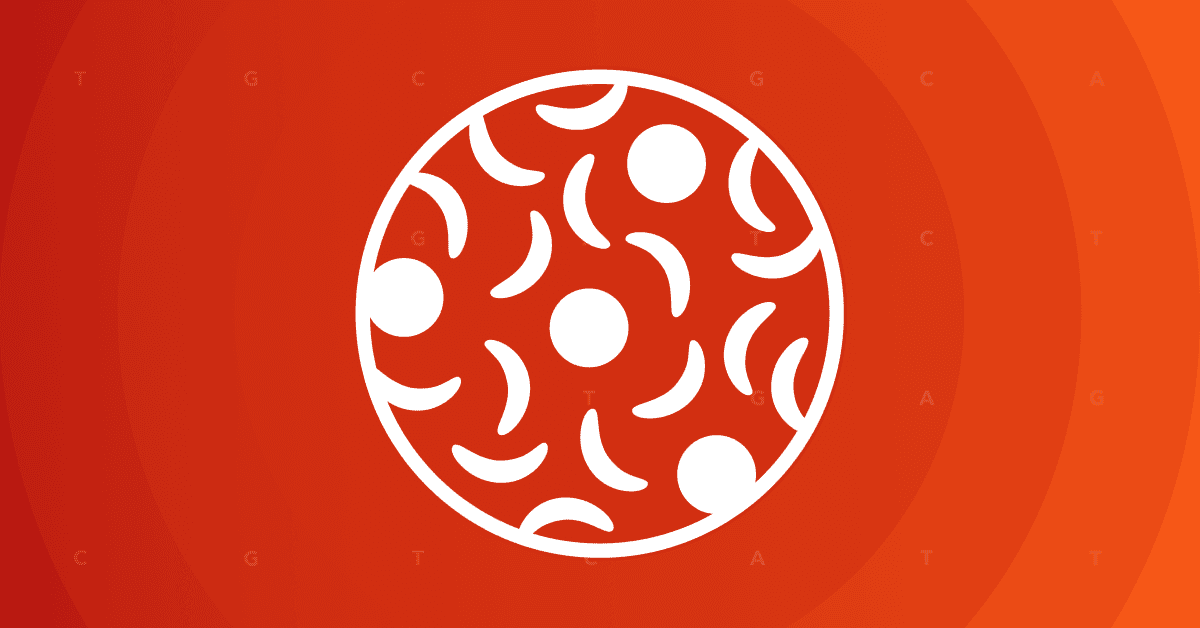September is Sickle Cell Awareness Month, which offers us another chance to highlight some of the work 23andMe and its collaborators have done over the years.
Earlier this month, researchers from 23andMe, the the National Institutes of Health, and Johns Hopkins University School of Medicine published new data on the association between sickle cell trait and blood clots. The new findings highlight the importance of this ongoing research and our overall efforts to illuminate this condition.
At 23andMe, knowledge is power, and understanding risks offers people opportunities to mitigate them.
Awareness and Research
But more than that, 23andMe also offers a unique research model that allows individuals to learn about their genetic likelihood of developing a condition and participate in innovative genetic research that could potentially find new treatments.
As part of our Sickle Cell Carrier Status Awareness Program, 23andMe has collaborated with academics and advocacy organizations to increase understanding of sickle cell. In addition, we’re providing resources for those with sickle cell trait and sickle cell disease. With the help of the Sickle Cell Foundation of Georgia, Inc. (SCFG), Breaking the SSickle Cell Cycle, Sickle Cell 101, and the Morehouse School of Medicine, we’re working with Black communities to promote awareness.
We are not alone in this effort. Recently, the NBA, the WNBA, and Wilson Sporting Goods began the #IBall4SickleCell social media campaign to raise awareness. The groups participating in the effort are Breaking the SSickle Cell Cycle, the American Red Cross of Tennessee, and New York Presbyterian’s Dalio Center for Health Justice. Learn more about sickle cell, the campaign, and how to help here.
From all this work and research, we have learned much about sickle cell and the people it impacts most. However, much work is still needed to improve people’s understanding of sickle cell.
More on Sickle Cell Anemia, Sickle Cell Trait
Although many people have heard of sickle cell, often they do not know the difference between sickle cell trait and sickle cell anemia.
To have sickle cell anemia, one must inherit two copies of the HbS variant in the HBB gene—one copy from each biological parent. Typical signs and symptoms include anemia, pain episodes, and frequent infection.
People with just one copy of the HbS variant are called carriers. They’re also said to have sickle cell trait. People with sickle cell trait are not expected to have sickle cell anemia. They typically do not experience any health complications. However, in rare cases, people with the sickle cell trait may experience some health impacts. Current research, including our study, is underway to understand better and spread awareness about the complications someone with SCT may experience.
Importantly, carriers can pass their variant on to their future children. If their partner has the HbS variant or another variant in the HBB gene, there’s a 25 percent chance that each child may have sickle cell anemia or a related blood disorder.
23andMe’s Sickle Cell Anemia Carrier Status Report**
23andMe’s Sickle Cell Anemia Carrier Status Report, which meets FDA requirements for clinical and analytical validity, looks at the HbS variant in the HBB gene linked to sickle cell anemia.
Sickle cell anemia is the most severe form of sickle cell disease. Three hundred million people worldwide and one in 13 Black and African Americans in the United States have sickle cell trait, making them carriers for sickle cell anemia.
In addition to informing people if they have one copy of the HbS variant and are carriers for sickle cell anemia, 23andMe’s report can also tell individuals if they have two copies of the tested variant and if they are at risk of developing symptoms. However, the report does not describe one’s overall risk of developing symptoms.
Because the HbS variant is more common in certain populations, the Sickle Cell Anemia report is most relevant to people of African, Middle Eastern, and South Asian descent, as well as people from the Caribbean, the Mediterranean, and parts of Central and South America.
23andMe Health + Ancestry Service customers and 23andMe+ Premium members can see their Sickle Cell Anemia report here.
Not yet a customer? Learn more about all that 23andMe offers here.
Note:
**The 23andMe PGS test uses qualitative genotyping to detect select clinically relevant variants in the genomic DNA of adults to report carrier status and reporting and interpreting genetic health risks. The relevance of each report may vary based on ethnicity. Our carrier status reports can be used to determine carrier status but cannot determine if you have two copies of any genetic variant. These carrier reports are not intended to tell you anything about your risk for developing a disease in the future, the health of your fetus, or your newborn child’s risk of developing a particular disease later in life. We provide a single report for certain conditions that includes information on carrier status and genetic health risk. For important information and limitations regarding other genetic health risk reports and carrier status reports, click here.




